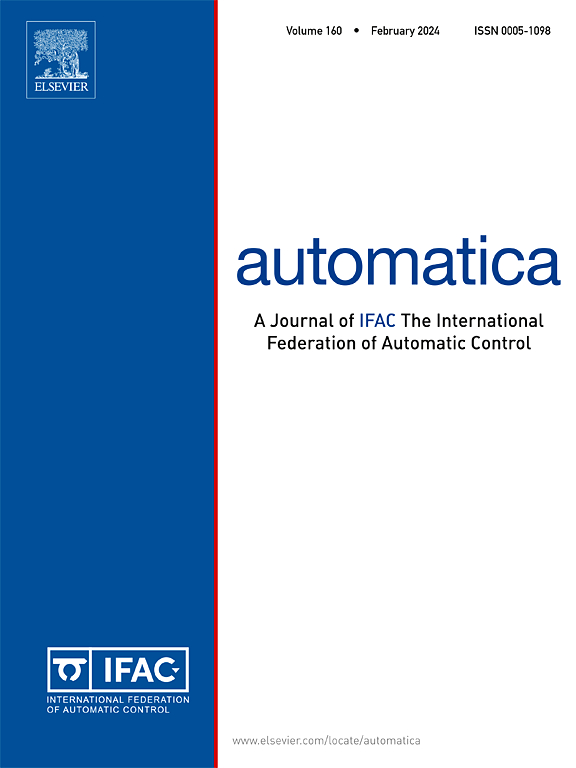Scalable command governor via semi-ellipsoidal set for linear systems with time-varying soft constraints
IF 5.9
2区 计算机科学
Q1 AUTOMATION & CONTROL SYSTEMS
引用次数: 0
Abstract
This paper provides a solution for a command governor (CG) that employs a semi-ellipsoidal set. The motivation is driven by the need to address the shortcomings of polyhedral and ellipsoidal sets widely used in CG. In particular for many applications, polyhedral sets require a large number of linear inequality constraints while ellipsoidal sets are too conservative. Furthermore, both types of sets are generally designed for systems with time-invariant and hard constraints. The contributions of the paper are: (i) we provide new convex conditions to construct an invariant and constraint-admissible semi-ellipsoidal set for discrete-time linear systems with time-varying soft constraints; (ii) we propose a computationally efficient procedure to solve the online optimization problem associated with the newly introduced semi-ellipsoidal set in CG. Three numerical examples with comparison to earlier solutions from the literature illustrate the effectiveness of the proposed approach.
具有时变软约束的线性系统的半椭球集可伸缩命令调速器
本文给出了一种利用半椭球集的命令调速器的解决方案。其动机是为了解决CG中广泛使用的多面体集和椭球体集的缺点。特别是在许多应用中,多面体集合需要大量的线性不等式约束,而椭球体集合过于保守。此外,这两种类型的集合通常是为具有时不变和硬约束的系统设计的。本文的贡献有:(1)对于具有时变软约束的离散线性系统,我们提供了构造不变且约束允许的半椭球集的新的凸条件;(ii)我们提出了一种计算效率高的方法来解决与CG中新引入的半椭球集相关的在线优化问题。三个数值例子与文献中较早的解决方案进行了比较,说明了所提出方法的有效性。
本文章由计算机程序翻译,如有差异,请以英文原文为准。
求助全文
约1分钟内获得全文
求助全文
来源期刊

Automatica
工程技术-工程:电子与电气
CiteScore
10.70
自引率
7.80%
发文量
617
审稿时长
5 months
期刊介绍:
Automatica is a leading archival publication in the field of systems and control. The field encompasses today a broad set of areas and topics, and is thriving not only within itself but also in terms of its impact on other fields, such as communications, computers, biology, energy and economics. Since its inception in 1963, Automatica has kept abreast with the evolution of the field over the years, and has emerged as a leading publication driving the trends in the field.
After being founded in 1963, Automatica became a journal of the International Federation of Automatic Control (IFAC) in 1969. It features a characteristic blend of theoretical and applied papers of archival, lasting value, reporting cutting edge research results by authors across the globe. It features articles in distinct categories, including regular, brief and survey papers, technical communiqués, correspondence items, as well as reviews on published books of interest to the readership. It occasionally publishes special issues on emerging new topics or established mature topics of interest to a broad audience.
Automatica solicits original high-quality contributions in all the categories listed above, and in all areas of systems and control interpreted in a broad sense and evolving constantly. They may be submitted directly to a subject editor or to the Editor-in-Chief if not sure about the subject area. Editorial procedures in place assure careful, fair, and prompt handling of all submitted articles. Accepted papers appear in the journal in the shortest time feasible given production time constraints.
 求助内容:
求助内容: 应助结果提醒方式:
应助结果提醒方式:


